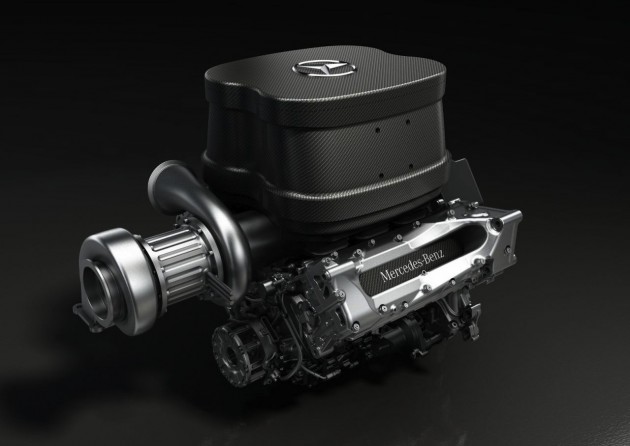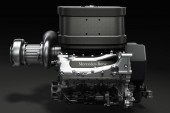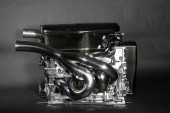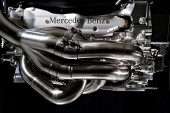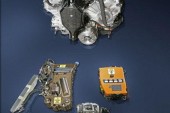Even though the 2013 season hasn’t even started, a new FIA rule will come into play for the 2014 Formula One season which requires all teams to adopt a 1.6-litre turbocharged V6 engine layout. This will replace the current ‘NA’ V8 specification.
Mercedes-Benz has already developed its engine, and has reveal various images for us all to see. The unit features an unmissable large turbocharger sitting in between the cylinder banks, forcing air into a huge carbon fibre induction box and inlet manifold.
There’s no word on what sort of figures it will produce, however, Andy Cowell, Mercedes-Benz F1 engine boss, recently spoke to reporters about the engine’s character and sound at a special event. He said the engines will produce much more torque than the current units, especially exiting corners.
“I had the privilege of standing in a test cell the first time it was run and I had a big smile on my face. The sound is going to be pleasant, with the volume a little lower, but it’s not a problem with the direction we are going.”
In terms of speed and lap time differences, it’s anyone’s guess at this stage. Judging purely by history, the sport is becoming quicker overall. One thing that is expected to change dramatically is the behaviour of F1 cars.
The effect a turbo engine can have on a car’s character is generally an exciting one, as the power tends to rise exponentially as opposed to gradually like a linear naturally aspirated unit.
If we turn back the clock to the 1970s and 1980s, turbo F1 cars were very common. Under the then FIA regulations, which allowed either a 3.0-litre naturally aspirated unit or a 1.5-litre boosted unit, F1 was a very exciting spectator sport. The 2014 season could follow a similar trend. Cowell said,
“Cars with more power than grip coming out of the corners – that is something that we all enjoy.”
